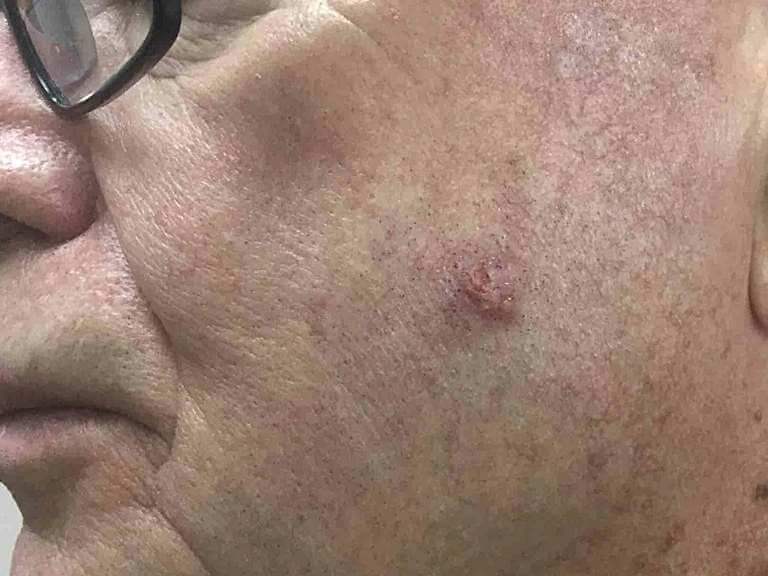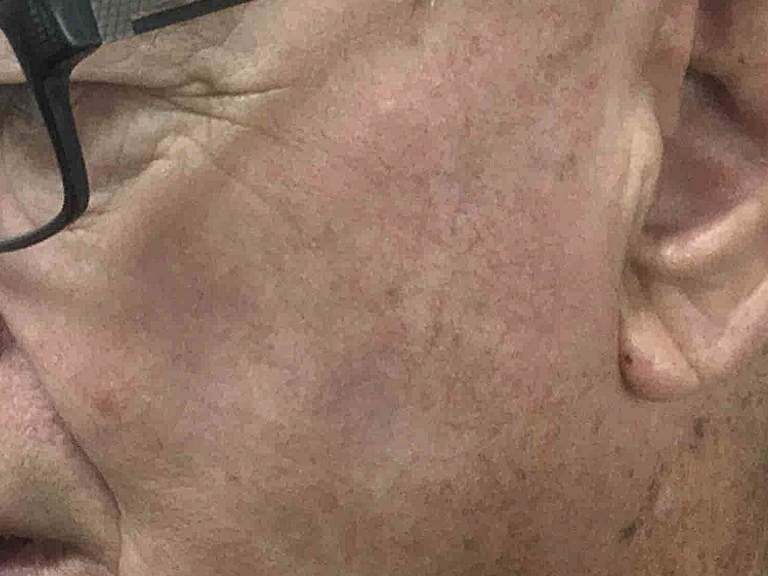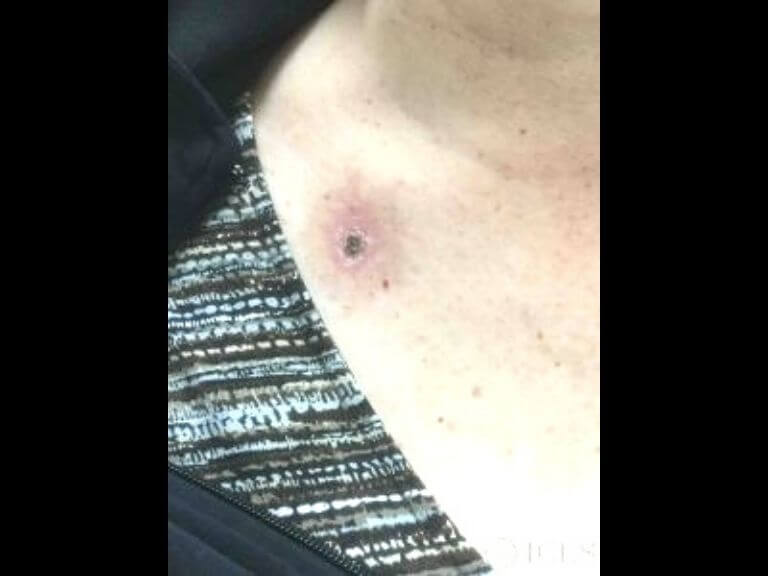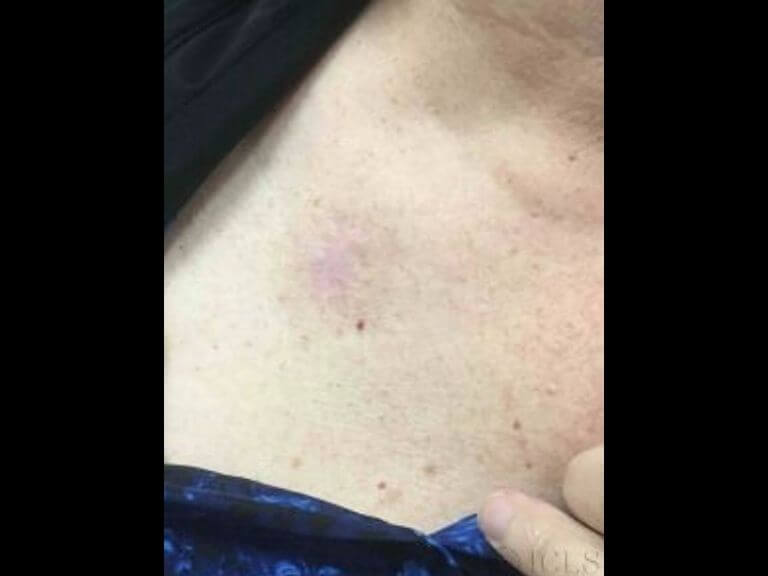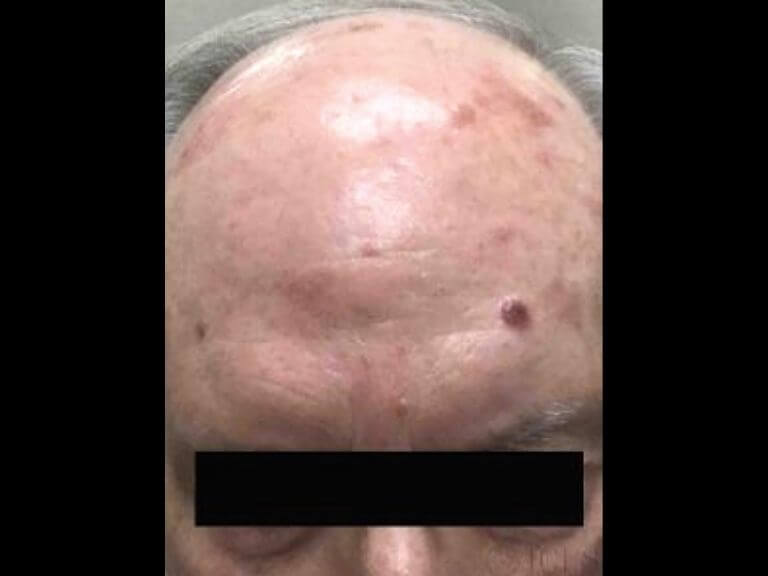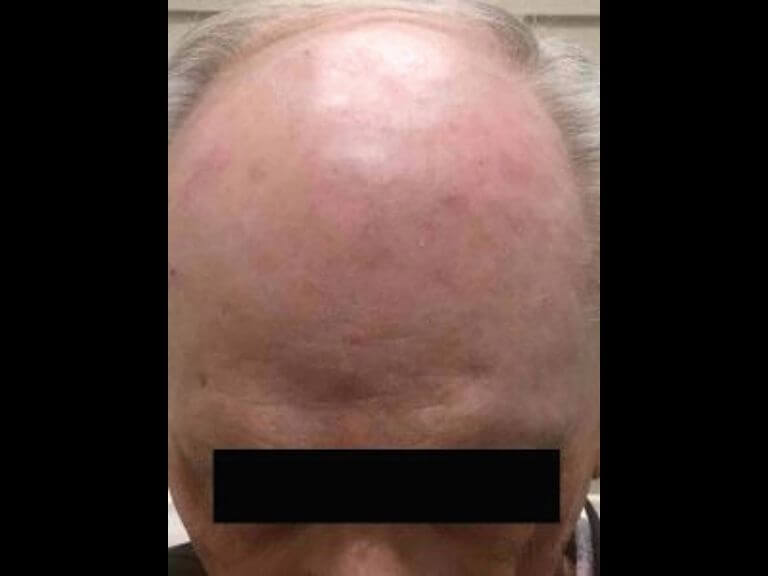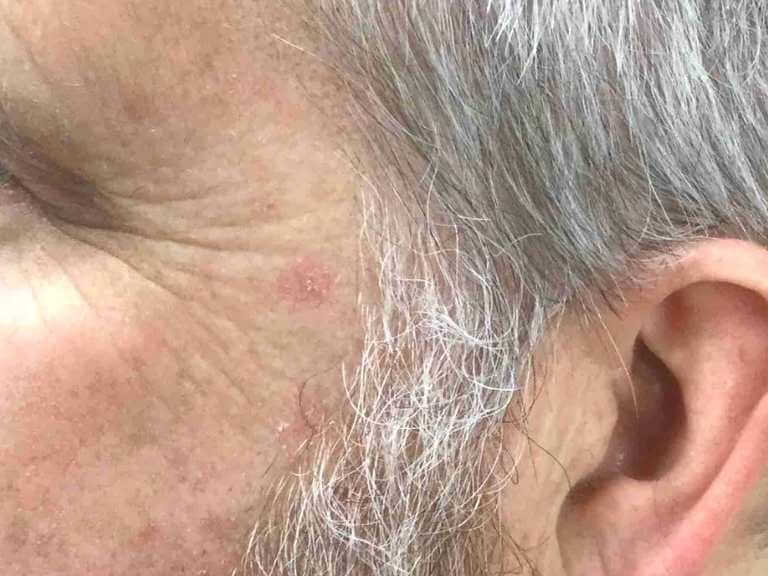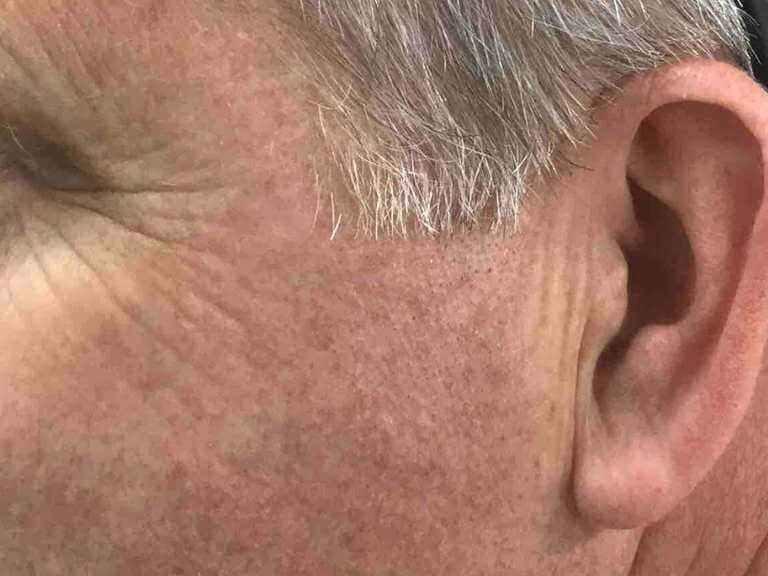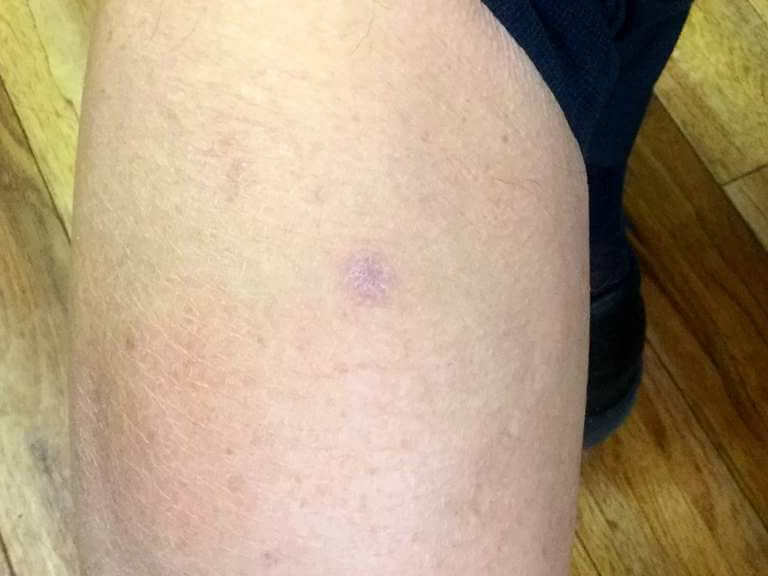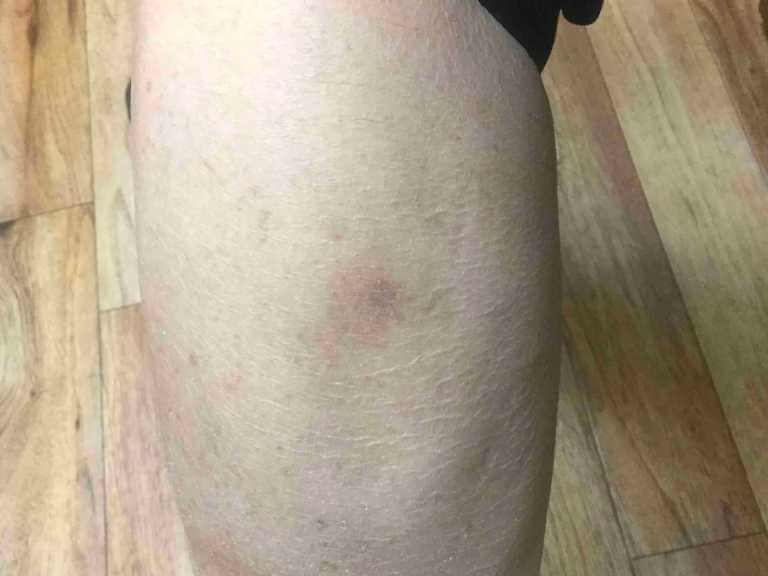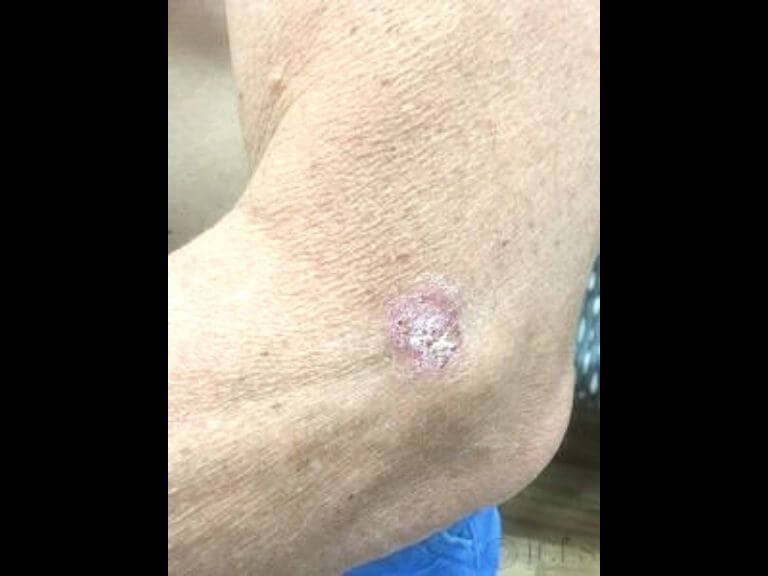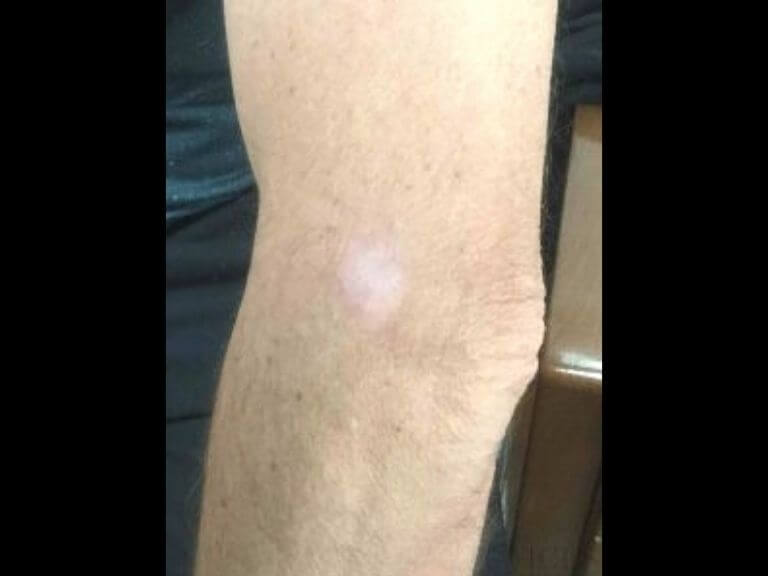Metvix PDT Therapy in Oakville, Ontario
 Non-Surgical Treatment
Non-Surgical Treatment At ICLS Dermatology, we offer Metvix PDT Therapy, an innovative treatment for precancerous skin lesions and certain types of skin cancer. This therapy targets abnormal cells with precision, promoting healthier skin with minimal side effects.
ICLS Dermatology is a leader in advanced skin cancer treatments, servicing the Greater Toronto Area from our Oakville location. Our Metvix PDT Therapy, led by Dr. Sheetal Sapra, combines cutting-edge technology with compassionate care.

What is Metvix Photodynamic Therapy?
Metvix is a prescription cream that is used for treating multiple precancerous lesions and sun damage on the face and/or scalp. At ICLS, we often combine Metvix with Photodynamic Therapy (also known as PDT) to treat a variety of skin conditions, including Actinic Keratosis and Primary Superficial Basal Cell Carcinoma.
Metvix uses light and light-activated medications to pinpoint abnormal cells. The medication is applied topically, allowing it to be absorbed and passed by normal cells. In cancerous cells, however, the medication lasts longer, allowing our specialists to clearly identify areas that require treatment. Natural daylight or red light therapy is used to activate the photosensitizers and release oxygen, effectively treating the problematic cells. The unique formula of Metvix topically penetrates cancerous and precancerous lesions more deeply. Some patients experience significant results only six months following their last treatment.
The main advantage of Metvix therapy is that it offers excellent cosmetic results without the associated scar that can be caused by surgical intervention.
What Conditions Does Photodynamic Therapy Treat?
Photodynamic therapy is beneficial in a wide range of conditions. Some of the conditions it treats include:
- Pancreatic cancer
- Lung cancer
- Esophageal cancer
- Bile duct cancer, sometimes referred to as cholangiocarcinoma
- Head and neck cancers
- Acne
- Psoriasis
- Nonmelanoma skin cancer
- Precancerous skin changes, called actinic keratosis
- Fungal infections
- Viral infections
- Bacterial infections
- Some types of cold sores
In general, it may help with cancerous lesions of various types, including superficial basal cell carcinoma (superficial BCC), squamous cell carcinoma, and others. However, every patient’s situation is different. We encourage you to speak to us about how photodynamic therapy can help you with any type of cancer cells you have been diagnosed with.
How Much Does Metvix Treatment Cost?
A variety of variables determine the cost that you can expect. The type of cancer, the surface of the skin exposed, the type of treatment, and the overall treatment area are some of the factors that impact the cost of this procedure. Keep in mind that when you meet with our health professionals, we will work with you to better understand your needs and offer a clear price after this precise consultation. Photodynamic therapy isn’t covered by Health Canada (OHIP), but your personal work benefits might cover up to 80% or more of the medication cost.
How to Prepare for Metvix Photodynamic Therapy
If you are having photodynamic therapy, your first step will be to speak to our team during a consultation. We will discuss a variety of factors, including the type of cancer cells, the area treated, and your skin needs. We will then offer specific information about how to prepare for your procedure.
Most of the time, this will include:
- Stopping any UV treatments and minimizing any sun exposure to the treatment site for several weeks prior to the treatment.
- Let us know about any type of allergic reactions or complications you have had with health products in the past.
- Discuss any medications you are taking with us during your consultation. We may recommend pausing those medications or making changes based on what our team and your health professionals recommend.
Follow our instructions for preparing the skin prior to your procedure. Do not use any type of skin application prior to your treatment. We also encourage you to minimize any exposure to chemicals, direct sunlight, or creams prior to your treatment.
How Long Does It Take?
Your photodynamic treatment (PDT) will take between 2 and 3 hours to complete. This includes the time it takes to apply the Metvix cream to the area and then allow it to incubate on the treated area. Our goal will be to control any type of reactions you may have, though most people do not. Once the treatment is in place, we expose the treated area to light.
The length of treatment depends on various factors. This includes the treated location (the size and overall location) as well as the protocols we follow. Most people will need two treatments spanned 7 days apart. This will ensure adequate destruction of the lesions.
Aftercare and Recovery
After the treatment is completed, patients may experience some temporary redness and minimal swelling of the skin. Peeling may also be experienced, ranging from very little to copious amounts. Generally, redness should disappear entirely by 2-3 weeks after your treatment, and swelling will reduce or be eliminated after 2-7 days. Patients will require anywhere from 2-3 treatments, depending on Dr. Sapra’s medical team’s recommendations.
Follow-Up and Aftercare
It can take some time for your skin to heal. During this time, we recommend contacting us at any time if you have complications or if the redness does not improve within two to three days. We will also offer pain management and swelling support.
You will need to come in for several treatments. After your sessions, we may recommend additional support, including follow-up care, over the next few weeks and months. Some people may need maintenance treatments over time.
How Many Sessions Are Needed?
Most people need two treatments, some three. PDT is 80 to 90% effective, but some people may need more treatments. Following your procedure, we will evaluate the treatment site to determine what type of additional care you may need on an ongoing basis.
Are Metvix PDT Therapy Results Permanent?
The chemical reaction involved in photodynamic therapy creates a long-lasting result. We call it a semi-permanent solution because it will last several months. Research indicates this treatment can be as successful as other cancer treatments, including chemotherapy and radiation. However, various factors, including the type of cancer, can affect how long the treatment lasts.
What Are the Benefits of Metvix Treatment?
The benefits of photodynamic therapy are numerous and include:
- Less invasive than surgery.
- Treatment can be repeated as necessary.
- Treatment consists of out-of-hospital care.
- Most people with skin lesions see the same or similar results to chemotherapy.
What Are the Side Effects?
Metvix photodynamic therapy is safe for many people to treat cancerous lesions and other skin conditions. However, there are some potential side effects you should know, including:
- Mild swelling at the treatment site
- Scales, crusts, or blister development
- Discoloration of the skin
- Itching, stinging, and burning
- Skin infections
You may have other types of skin and non-skin reactions. Alert your doctor to anything you notice.
Before and After
Photos are for educational purposes only.
Featured Video
Frequently Asked Questions
-
Is Metvix covered by insurance?
The Metvix cream is fully covered by most private insurance companies.
-
How long does it take to recover from Metvix photodynamic therapy?
The procedure itself is painless for patients. At the end of the three hours, patients wash the area very well with gentle soap and water. Over the next few days, patients can expect a “gentle” reaction that may feel like a sunburn. In some instances, patients have a “brisk reaction,” and may develop small crusty areas. For best results, the treatment is repeated again in two weeks, and then once a year for maintenance of more youthful skin
-
How does Daylight Metvix work?
During a Daylight Metvix procedure, a prescription cream called Metvix is applied over the patient’s entire face, scalp, or both. Once applied, this cream infiltrates any damaged skin cells, making them very sensitive to light. After allowing the cream to soak in for thirty minutes, the patient sits outside in the natural sunlight for roughly three hours. During this exposure to natural light, any damaged cells are destroyed.
-
How much does Metvix Daylight cost?
The cost of Metvix Daylight treatment includes a medication fee of $450 (tax-exempt) and a treatment fee of $200 (tax-exempt), for a total of $650. Contact ICLS to learn more and find out if this treatment is right for you.
-
How much does Metvix PDT cost?
The cost of Metvix PDT includes a medication fee of $450 (tax-exempt) and a treatment fee of $200 (tax-exempt), totaling $650. This pricing covers both the application of the medication and the light therapy session. For more details or to find out if Metvix PDT is the right treatment for you, contact ICLS.
Why Choose ICLS?
Patients from the Greater Toronto Area, including Toronto, Mississauga, Burlington, and Hamilton, trust ICLS for Metvix PDT Therapy. Dr. Sheetal Sapra’s team has extensive experience and an ethical approach to ensure you receive the best care possible. Schedule a consultation to learn how Metvix PDT Therapy can benefit your skin health.


Our Nurses & Specialist
At ICLS, you will be under the care of some of Canada’s most experienced registered nurses. ICLS is one of the only practices in the country (maybe even the world!) to employ only registered nurses to deliver treatments. Our all-female nursing staff consists of hard-working, internationally-trained medical professionals.
Our nurses perform your treatment under our medical director, Dr. Sheetal Sapra, who is a top dermatologist and pioneer of new technologies aimed at improving the lives and looks of his patients. Dr. Sapra has practiced medical dermatology for more than 35 years and has made significant contributions to the field.

Dr. Sheetal Sapra
Dr. Sheetal Sapra is a leader in the field of dermatology. He is a world-renowned dermatologist and pioneer of new technologies aimed at improving the lives and looks of his patients. Having practiced medical dermatology for more than 35 years, Dr. Sapra has made significant contributions to the field while treating issues such as acne, eczema, vitiligo, alopecia and psoriasis. Dr. Sapra has travelled the globe to learn from the best of the best and bring that knowledge home to his clinic in Oakville, where he not only shares, but also teaches.
Dr. Sapra’s Profile
